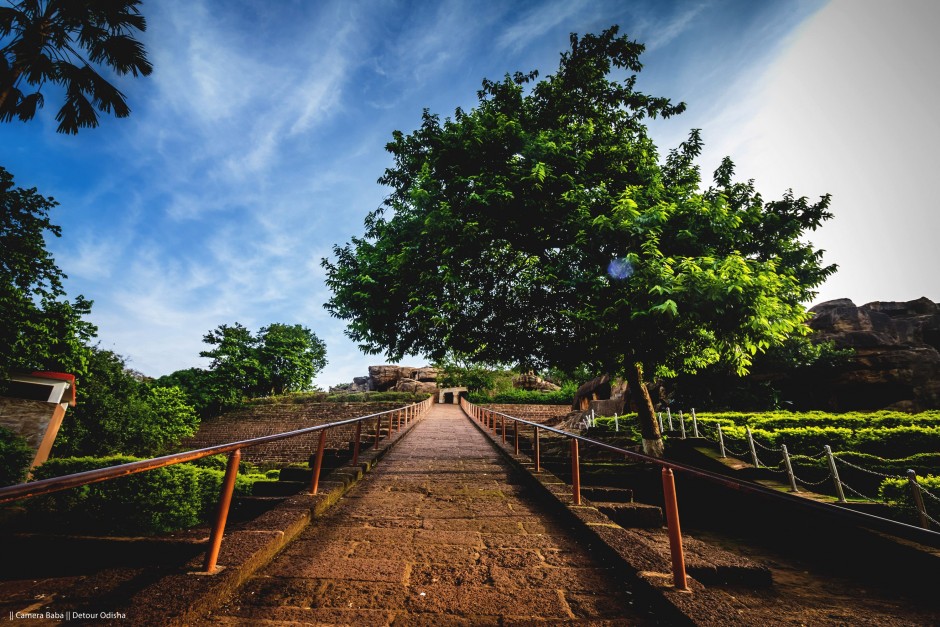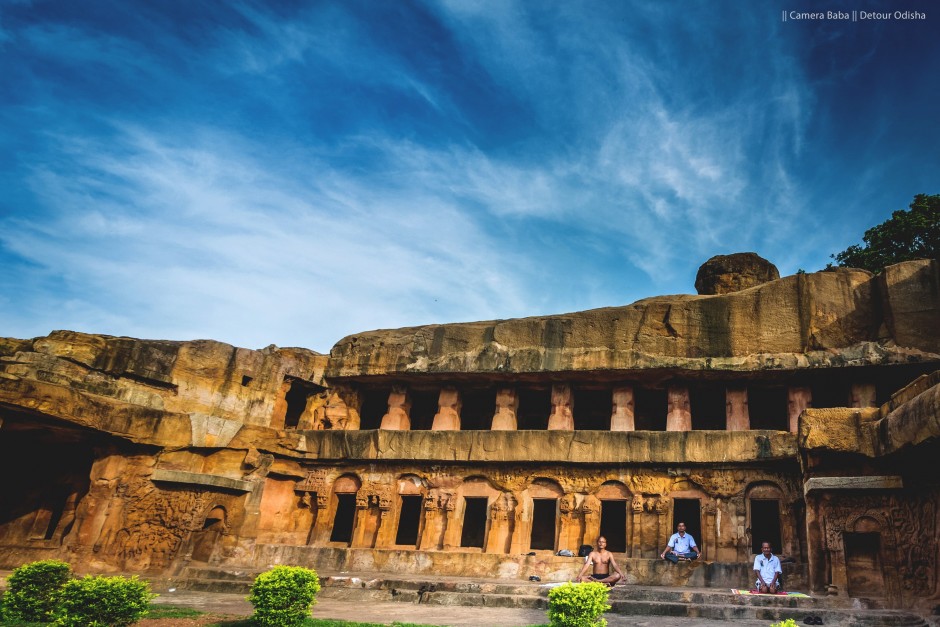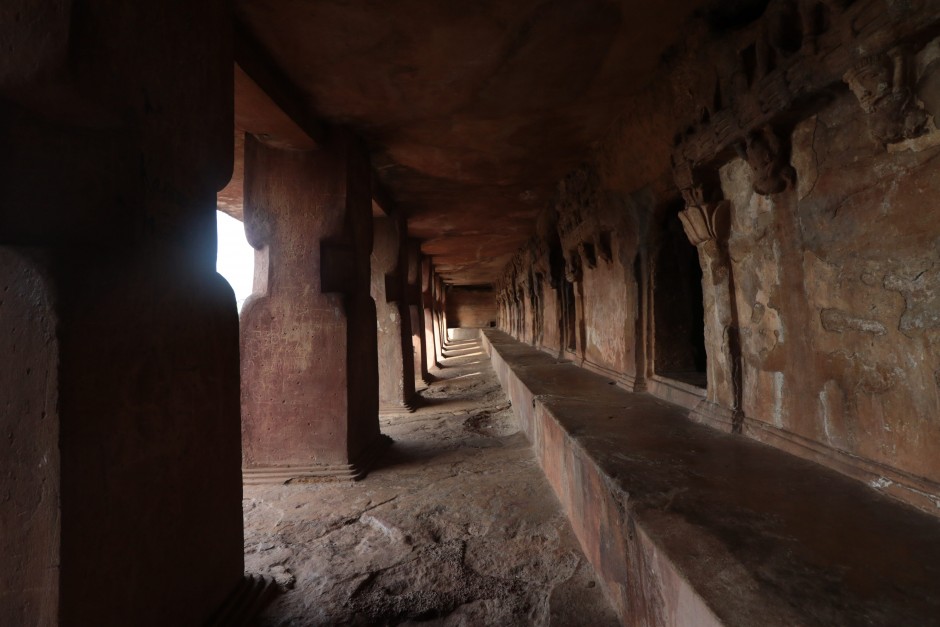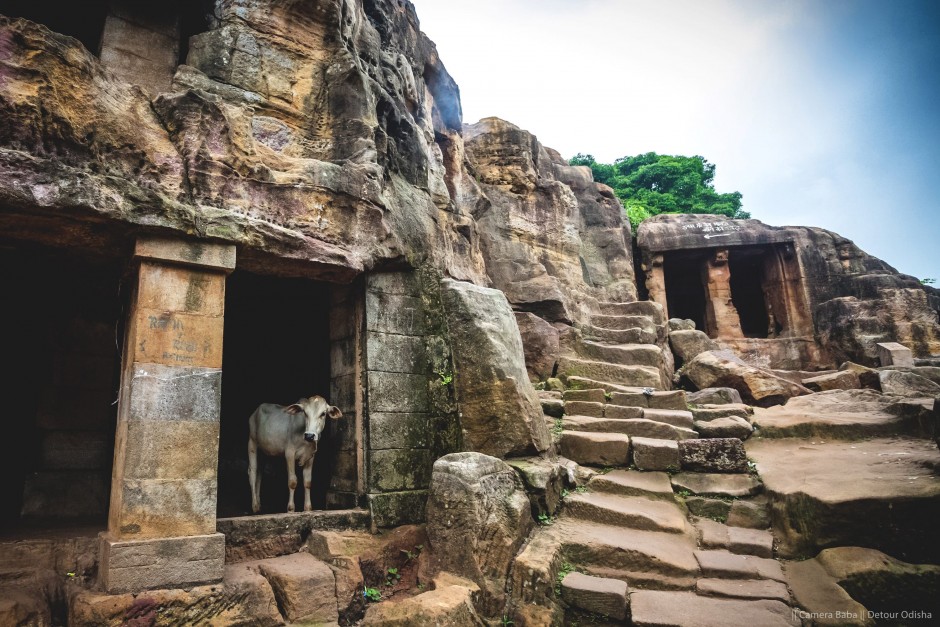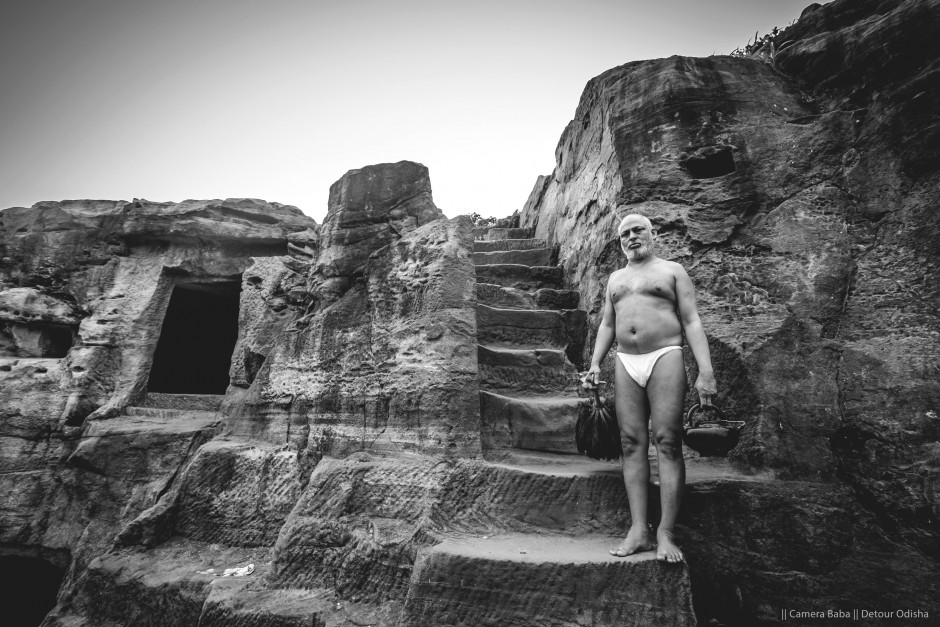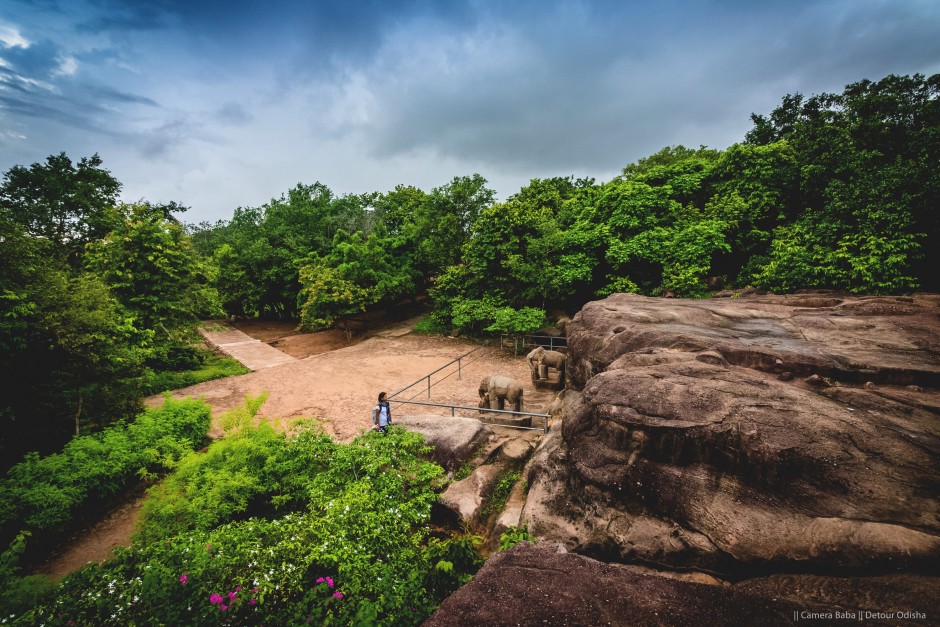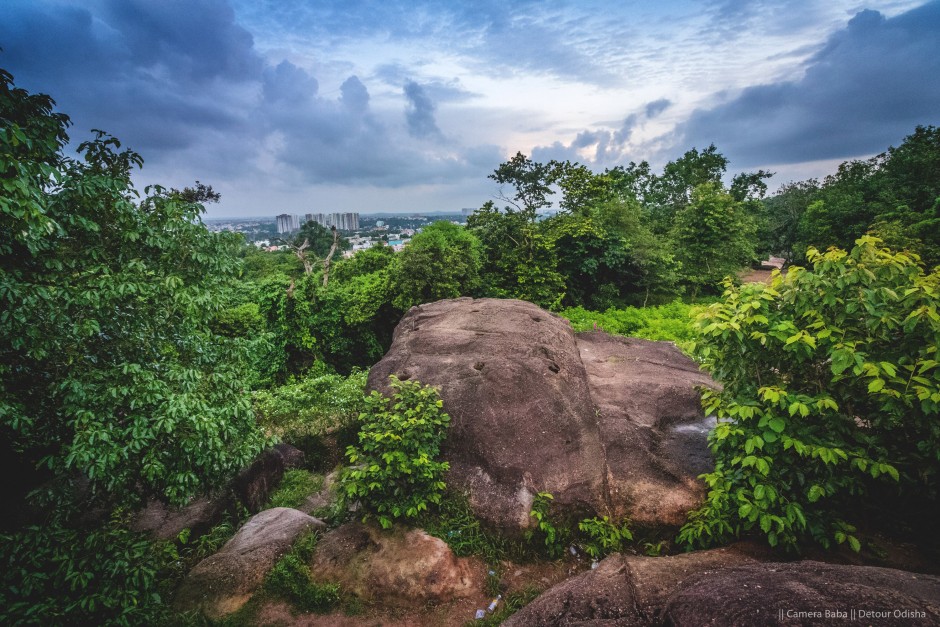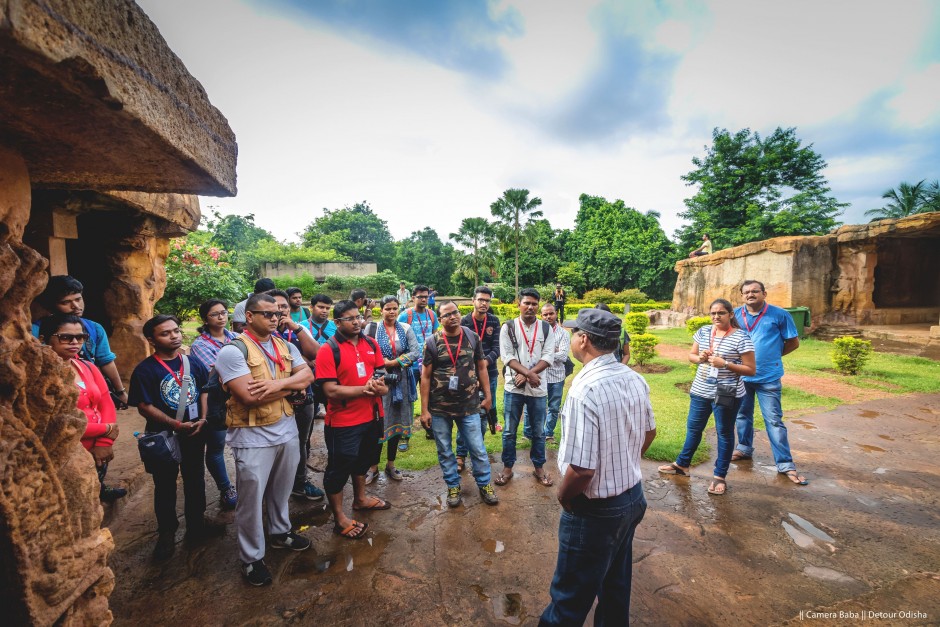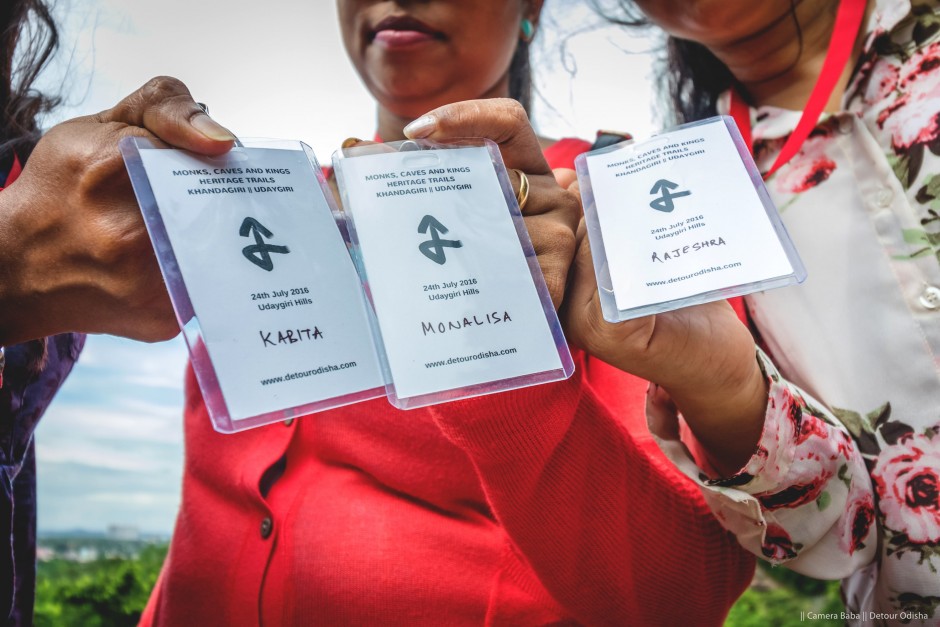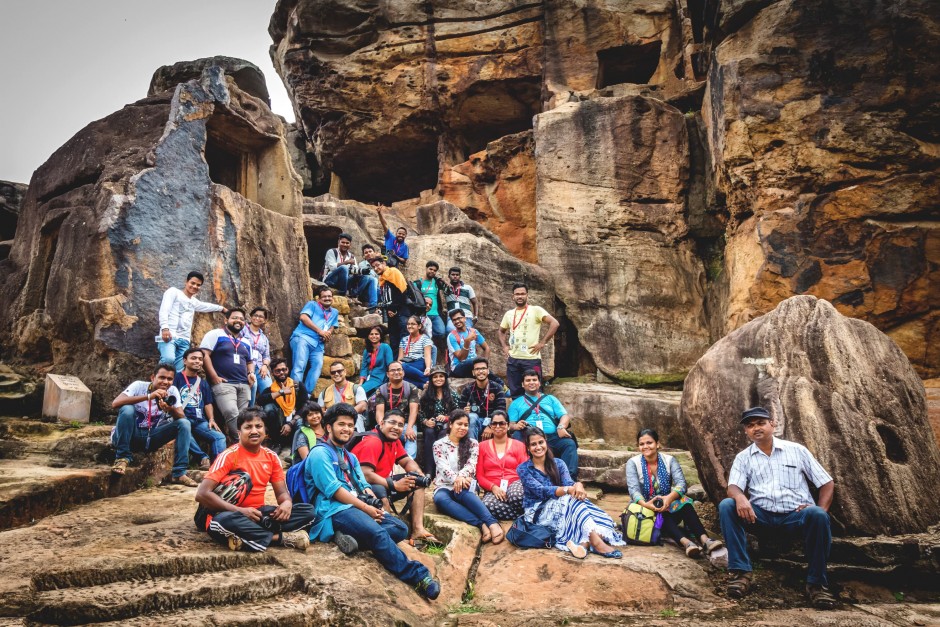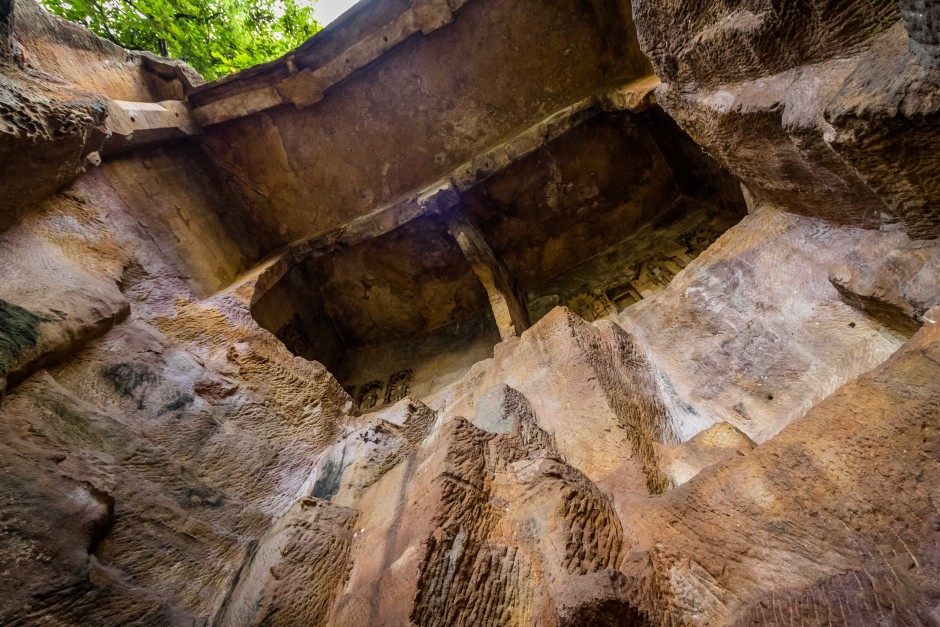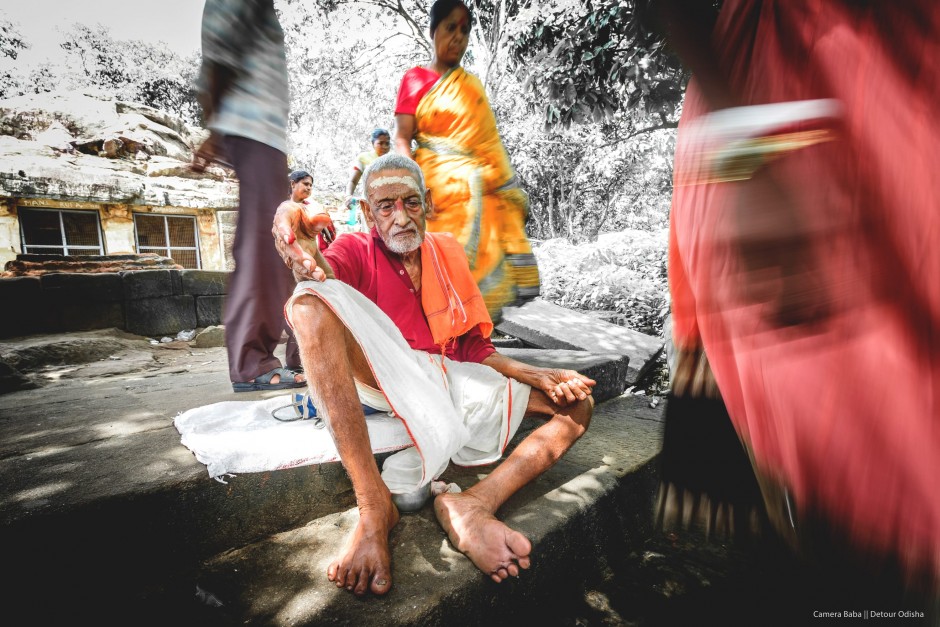On 24th July Detour Odisha , a young startup travel initiative based in Bhubaneswar , organized a Heritage Walk to explore the Ancient Jain trails along Khandagiri and Udaygiri .
As denizens we have made innumerable trips to these twin hills. But today it was going to be different! It was an opportunity to marvel not only at the brilliant cave architecture but also understand the Story associated with it over the ages. Often we miss the essence of these historic places as we dwell more on the architecture rather than the history and story by which such iconic landmarks came into existence.
Sunday morning looked good although light drizzle was predicted. Local city photographers, bloggers and heritage lovers as usual made it a point to join us as we promised to showcase the rich and vibrant heritage of these twin hills like never before !
After a quick registration and introduction the participants with their local Guide , individual tags , and a bottle of water were all set to Walk !
Between the twin hills, it is Udaygiri that calls for attention , dotted as it is with caves big and small ! As we ascended Udaygiri or the ‘Sunrise Hill’, we could feel the city behind us tucked amidst modern skyscrapers and on the move. Yet we were here moving back into history !
Once upon a time there was a ruler called King Kharvela .He was crowned King at the age of 24 and the kingdom of Kalinga flourished under his rule. Kharavela was a king of the Mahameghavahana dynasty, who is known for expansion of the Kalinga empire and his installation of public improvements, such as canal systems. King Kharvela was a great patron of the Jain culture. Although he was tolerant of all faiths, Jainism was injected with a fresh vigour and made the state religion during his long tenure and it was he who got 117 caves excavated at a great cost on these hills during the 13th year of his reign. The origin of the rock cut caves date back to the 1st Century BC .
As we closed in , the first cluster of caves looked down on us in a way that would make us take our hats off and make the humblest of bows ! Carved and tunneled these multi storied caves reveled in their beauty. We did not need the awestruck whispers round us to tell us what it was. Presenting the Rani Gumpha or the Queens Cave with its breathtaking panorama and balance. King Kharvela’ queen was evidently quite a patron of the arts, and probably had much to do with the impressive sculptural decoration of these caves. Description of King Kharvela’s capital and kingdom remain recorded for posterity in these caves, through inscriptions and carvings.
We moved on to the next site called Ganesh Gumpha . Flanked by two elephants on either side the Ganesh Gumpha is riddled with carvings that narrate the Story of the elopement of a Royal princess. More solitary caves for the Jain monks were perched above the Ganesh Gumpha. The gaping caves were very alluring and it was here that we took a brief moment to understand Jainism and the austere life of a Jain monk .
Jainism is an ancient religion from India which teaches that the way to liberation and bliss is to live lives of harmlessness and renunciation. The essence of Jainism is concern for the welfare of every being in the universe and for the health of the universe itself. Jains believe that animals and plants, as well as human beings, contain living souls. Each of these souls is considered of equal value and should be treated with respect and compassion. So the most central Jain teaching, and the heart of Jain ethics, is that of ahimsa (non-violence).
Renouncing all worldly affairs the Jain monks often dwelled in hills and caves . These dry shelters amidst the forest provided them the perfect ambience to meditate and attain peaceful liberation. But the shocking dimensions of these caves will leave you stunned. There is just enough space to sit cross legged and recline a bit , but no more than that . One cannot stand inside it and there is no provision for keeping any belongings or stocking food items . These stone beds with a slightly reclined end give the feel of a reclined pillow , but it’s still stone ! Small holes dug by the monks along the roof and floors of the caves were the only way to conserve water as and when it rained or flowed through the rocks.
There is absolute solitude in caves. The spiritual currents are elevating and probably that’s the reason monks preferred to mediate in caves.
Leaving behind the solitary caves we made our way through the rocky terrains and finally end our trail of Udaygiri at the Hathi Gumpha . At towering heights the Hathi Gumpha with its inscriptions and balance often leaves visitors stunned.
We made our way to the base of the Udaygiri hills and in between we were happy to have amidst us Mr.Sailesh Patnaik , a Wikimedian who contributes articles and content to Wikipedia . He interacted with the participants and guided them on how best they can contribute in generating quality content for Odisha and promote it as a Destination through Wikimedia Commons. Wikimedia Commons is a media file repository making available public domain and freely-licensed educational media content (images, sound and video clips) to everyone, in their own language.
After some quick refreshments we set forth to explore the Khandagiri hills also known as The Broken Hill has 15 caves . The most astonishing feature here was the stone quarry where stone pieces were chiseled and taken away for building temples. The cavity formed amidst the rocks speaks volumes of the amount of time and effort it would have taken to extract the rocks . Through some steep passages we made our way to the summit encountering more caves and people thronging to visit the 150 year old Jain Temple.
This was the end of our Heritage trail . The participants relaxed for a while under the shade of the trees intertwined through the hills . With a breathtaking view of the city on the right and Udaygiri caves on the Left our participants were left spoilt for choice ! They spent some time in silence absorbing the essence of the entire Heritage experience amidst Nature !
The Walk was highly appreciated by all the participants and it inspired the Group to explore more such authentic experiences across Odisha in the future.
At 24 it’s hard to fathom what we want to achieve in Life, but Kings and their era’s were obviously different! They built us a History to remember .
The Heritage of a city communicates the history of that place and history will always emanate from these glorious rocks.

